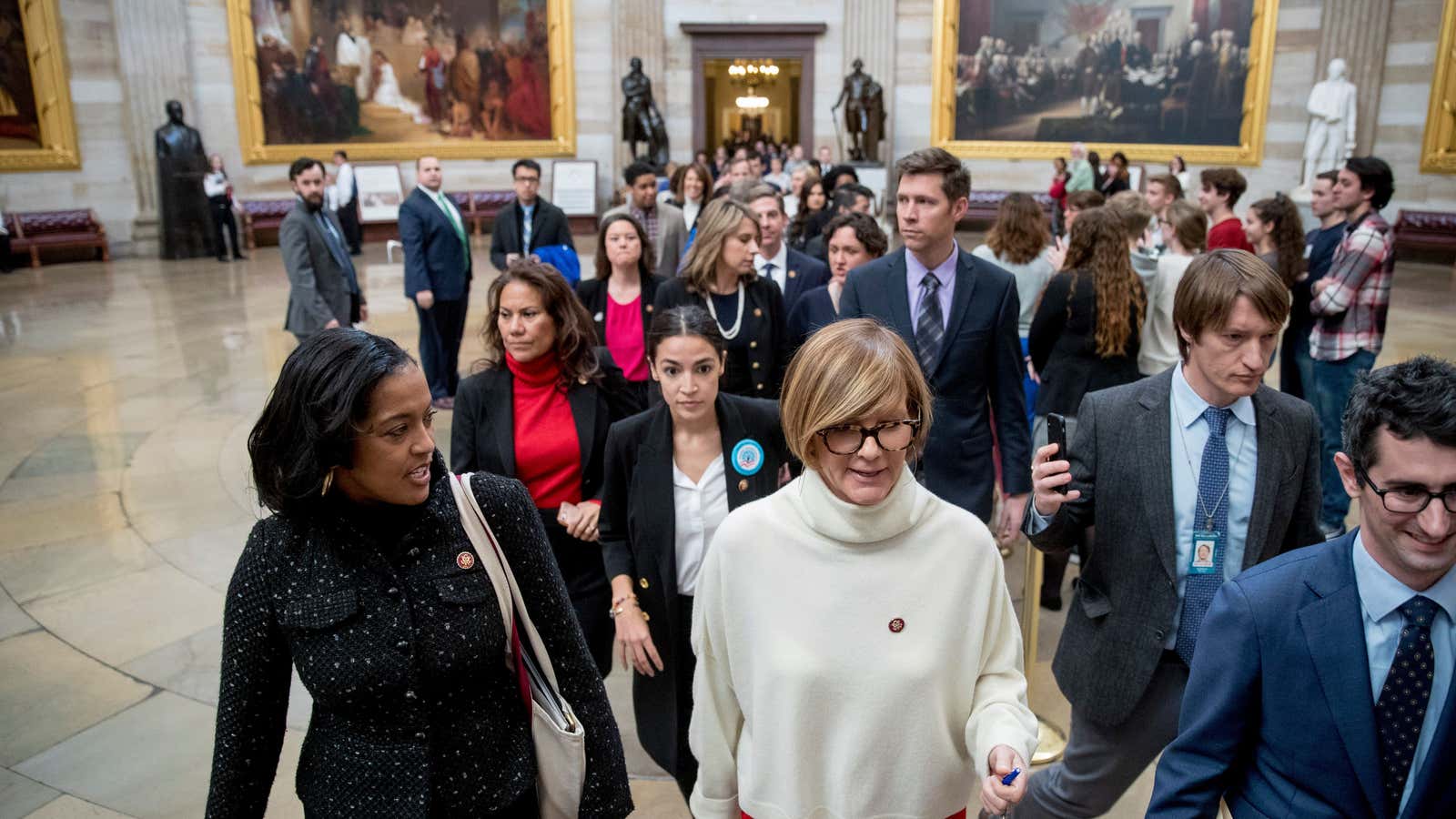The 116th Congress, which just settled on Capitol Hill, is the most diverse in American history. One thing the new women and minority representatives don’t have to worry about is pay equity. Regardless of gender, race, religion, or age, all members of Congress are paid $174,000, unless they are invested with special responsibilities, like the Speaker of the House, or Majority and Minority leaders.
That’s not the case for Congressional staffers. A study by Maxwell Palmer, an associate professor of political science at Boston University, and Joshua McCrain, a graduate student of political science at Emory University, found male staffers working both for House representatives and senators get paid substantially more than their female colleagues.
The working paper, which will be presented at the Southern Political Science Association’s conference this weekend (Jan. 17-19), is the first to analyze the wage gap among Congressional staff. It’s a reminder that despite the big strides made by female candidates during the 2018 midterm elections, Congress still has a long way to go towards gender equality.
535 firms with the same budget
Congress is a particularly apt place to study pay disparities, because all Congress members are allocated comparable budgets. At the House, hiring budgets are distributed evenly. Every member gets $944,671 to hire up to 18 staffers. In the Senate, the allowance for staffers depends on the population of the senators’ states. On average, each senator received $3.5 million in 2018.
“The study of gender gaps [within industries] can be complicated,” Palmer told Quartz, but Congressional offices are “essentially 535 firms with the same budget.”
He and his co-author scanned salary data for nearly 46,000 staffers from 2000 to 2014. They compared salaries of people with the exact same titles, as well those with similar levels of responsibility. The analysis also took into account the employees’ years of experience.
What they found is that hiring managers in Congress hold the same kind of gender bias as their counterparts in the corporate world. The average male staffer earned $57,547, more than $6,000 than the average female employee.
The the gender gap was even bigger among workers with higher seniority levels: about $10,000. Further, though 55% of employees were women, only 34% of them held senior positions.
Republican vs. Democratic gaps
The size of the gap also varied depending on where a woman worked, and who she worked for. On average, female staffers in the House were paid $5,500 less than their male counterparts, while in the Senate, they made $7,500 less.
Overall, women working for Republicans faced larger pay discrepancy. The widest gap that the researchers found was in the offices of House Republicans, who on average paid their female employees $15,500 less than their male colleagues. Regardless of party, male senators paid male staffers $7,500 more than women.
In general, male members of Congress hired a much larger number of men in higher positions. This is also true of Republican Congress members, regardless of their gender.
Palmer told Quartz that he and McCrain will likely be looking at what happens to the pay gap now that Congress has a more diverse makeup—but not for at least two years, in order to give enough time to complete the hiring.
